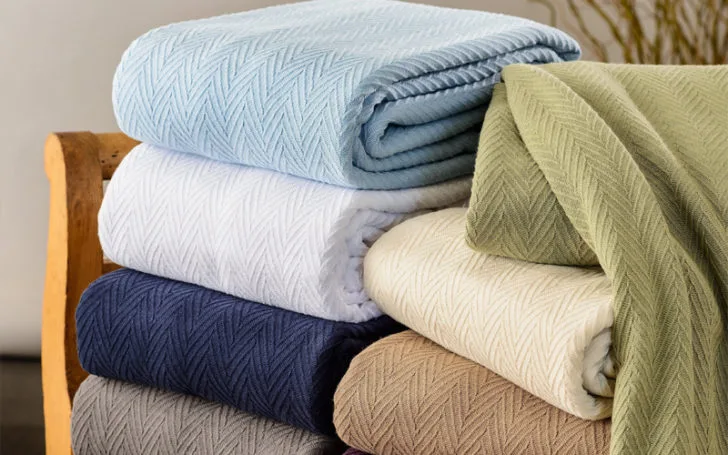When it comes to comfort and coziness, few things can rival the simple yet profound appeal of a good blanket. From keeping you warm on a chilly evening to adding a touch of style to your living space, blankets are versatile and essential items in any home.
However, with a wide array of blanket types and materials available, choosing the right one can be a daunting task.
In this article, we'll delve into everything you should know about blanket types and materials, helping you make informed decisions and enhance your comfort and style.
Why does choosing the right blanket matter?
- Comfort: The right blanket can provide the perfect balance of warmth and breathability, ensuring a comfortable night's sleep.
- Health: A suitable blanket can help regulate body temperature, preventing overheating or excessive cooling during sleep. Also, for individuals with allergies, choosing a hypoallergenic blanket can reduce the risk of allergic reactions.
- Aesthetics: The right blanket can complement a room's overall décor, adding to its visual appeal. It can also reflect personal style and preferences, creating a cozy and inviting atmosphere.
- Psychological Impact: The right blanket can evoke feelings of security and well-being, potentially reducing stress and anxiety.
Standard Blanket Types
Comforters
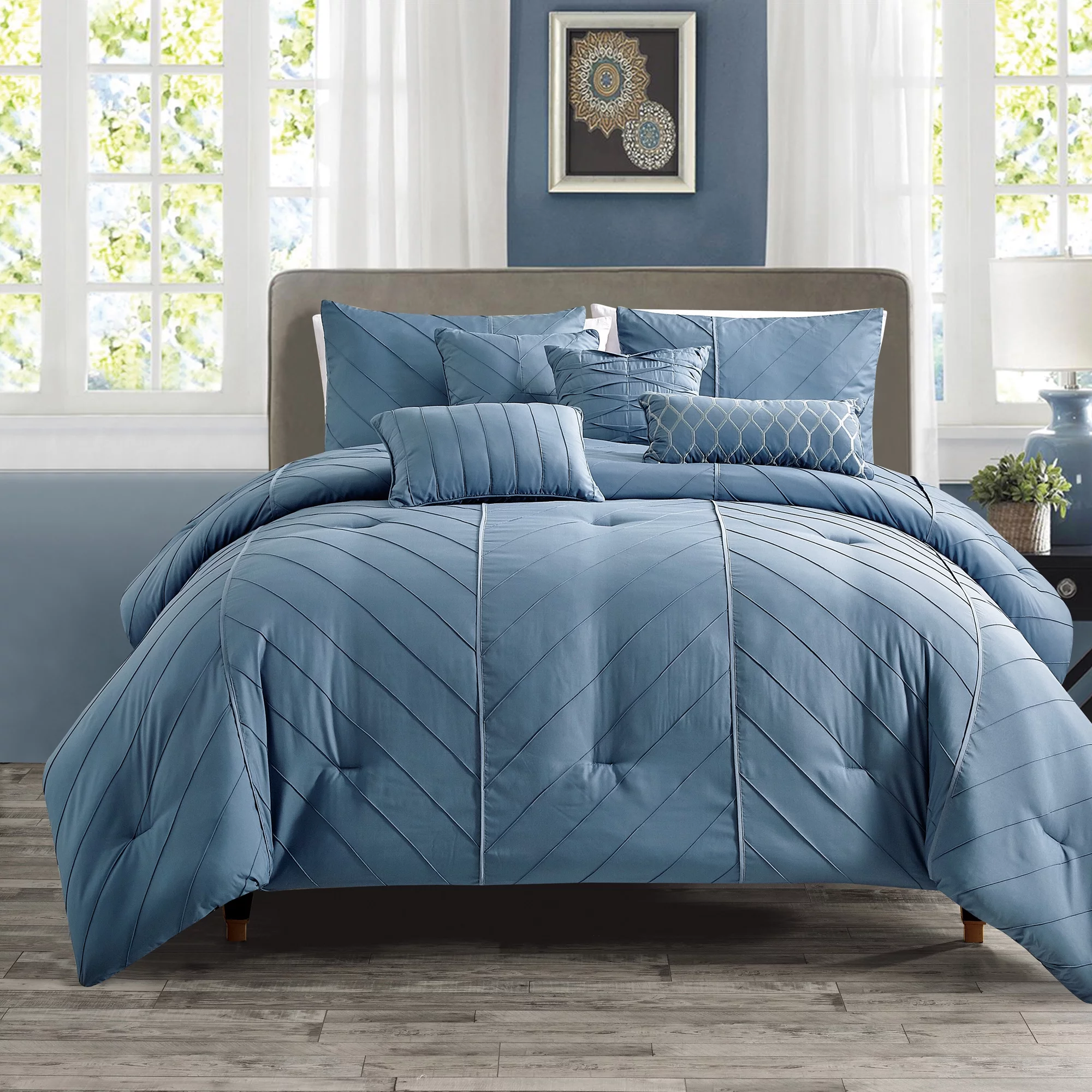
Comforters are thick, quilted blankets filled with layers of insulating materials such as down, feathers, or synthetic fibers. They are designed to offer warmth and are often used as the top layer of bedding. Comforters come in a variety of colors, patterns, and weights to suit different preferences and climates.
- Composition: Filled with insulating materials such as down, feathers, or synthetic fibers, encased in a decorative fabric shell.
- Best For: Individuals seeking a warm and cozy bedding option.
Duvets
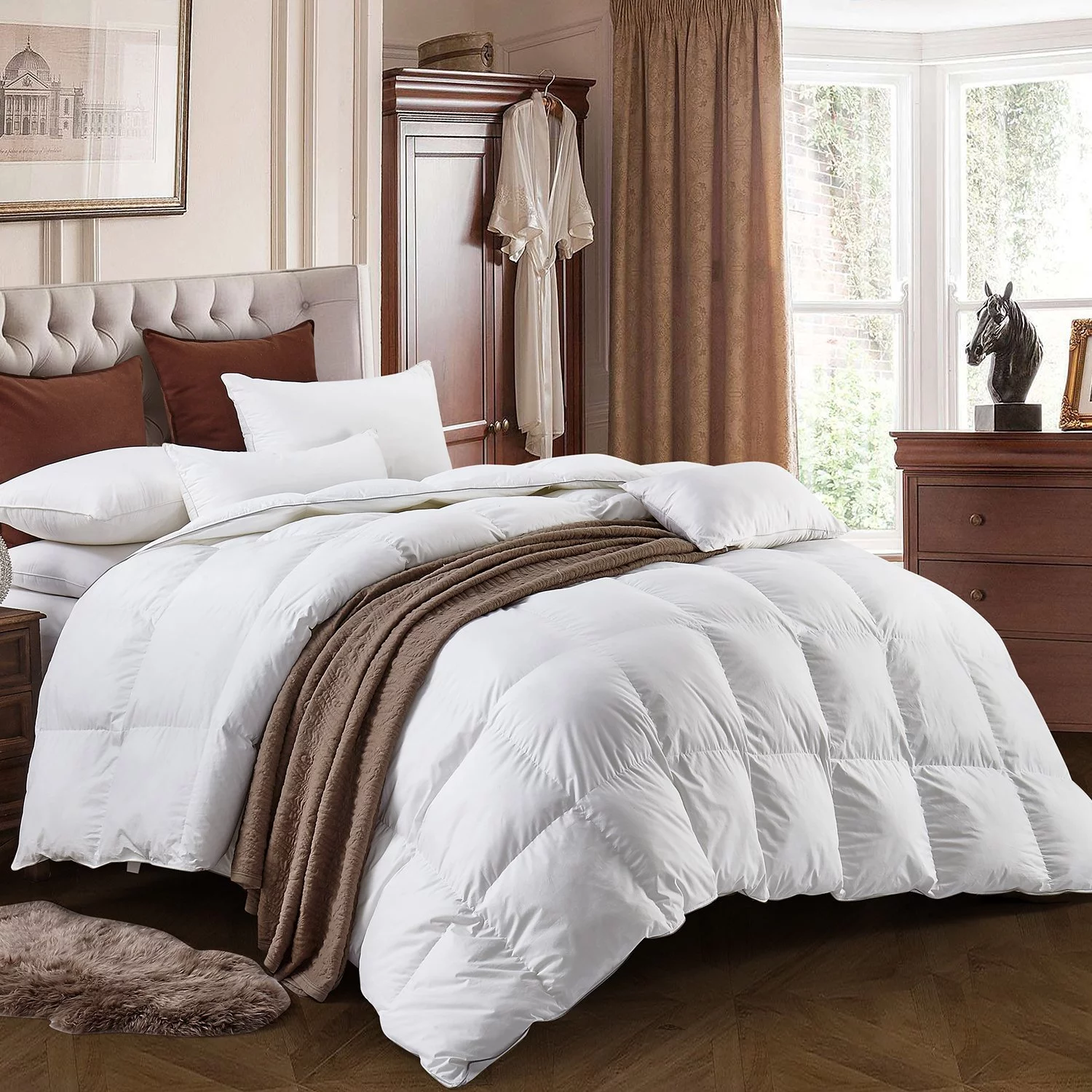
Duvets are a type of bedding consisting of a soft, flat bag filled with down, feathers, wool, or a synthetic alternative. They are designed to be used with a duvet cover, which can be easily washed or changed, offering both versatility and convenience in terms of style and maintenance.
- Composition: Filled with down, feathers, wool, or a synthetic alternative and encased in a fabric shell, typically used with a duvet cover.
- Best For: Those who prefer a versatile and easily changeable bedding option.
Quilts
Quilts are made of three layers: a woven cloth top, a layer of batting, and a woven back. They are known for their decorative stitching and can be used as a bedspread or lightweight cover. Quilts come in various styles, from traditional to modern, and are often cherished for their intricate designs.
- Composition: Three layers consisting of a woven cloth top, a layer of batting, and a woven back, often featuring decorative stitching.
- Best For: Individuals who appreciate a decorative yet functional bedding option.
Special Blanket Types
Throws
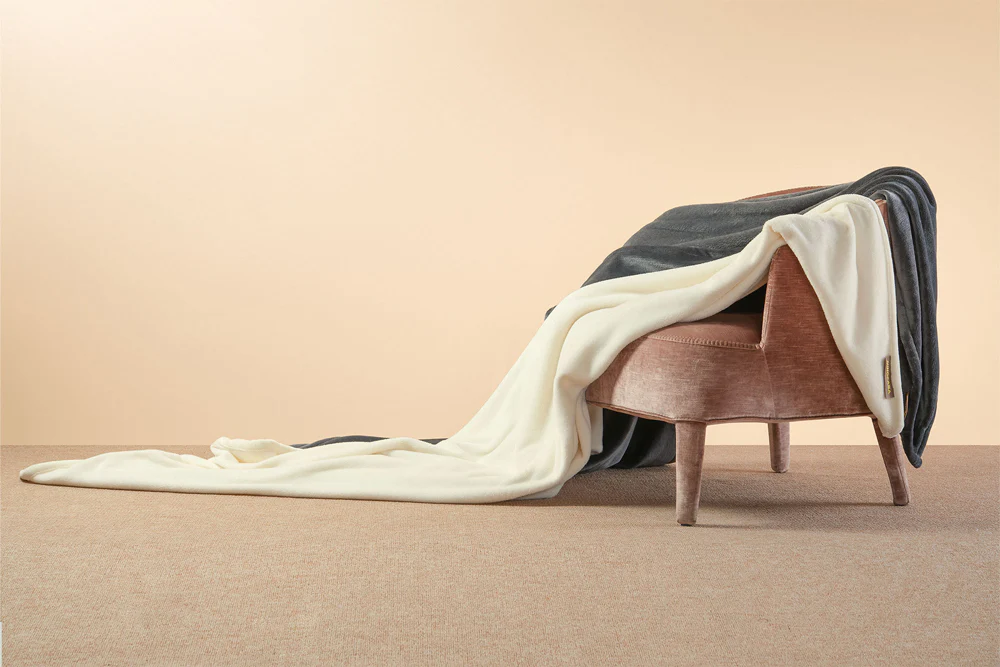
Throws are small, decorative blankets often used on sofas or chairs. They come in a variety of materials, such as cotton, fleece, or wool, and are perfect for adding a pop of color or texture to a room. These versatile blankets can also be used for extra warmth on chilly nights or as a stylish accessory for your living space.
- Composition: Cotton, fleece, wool, or acrylic
- Best For: Adding a decorative touch to a room, extra warmth on cool evenings
Weighted Blankets
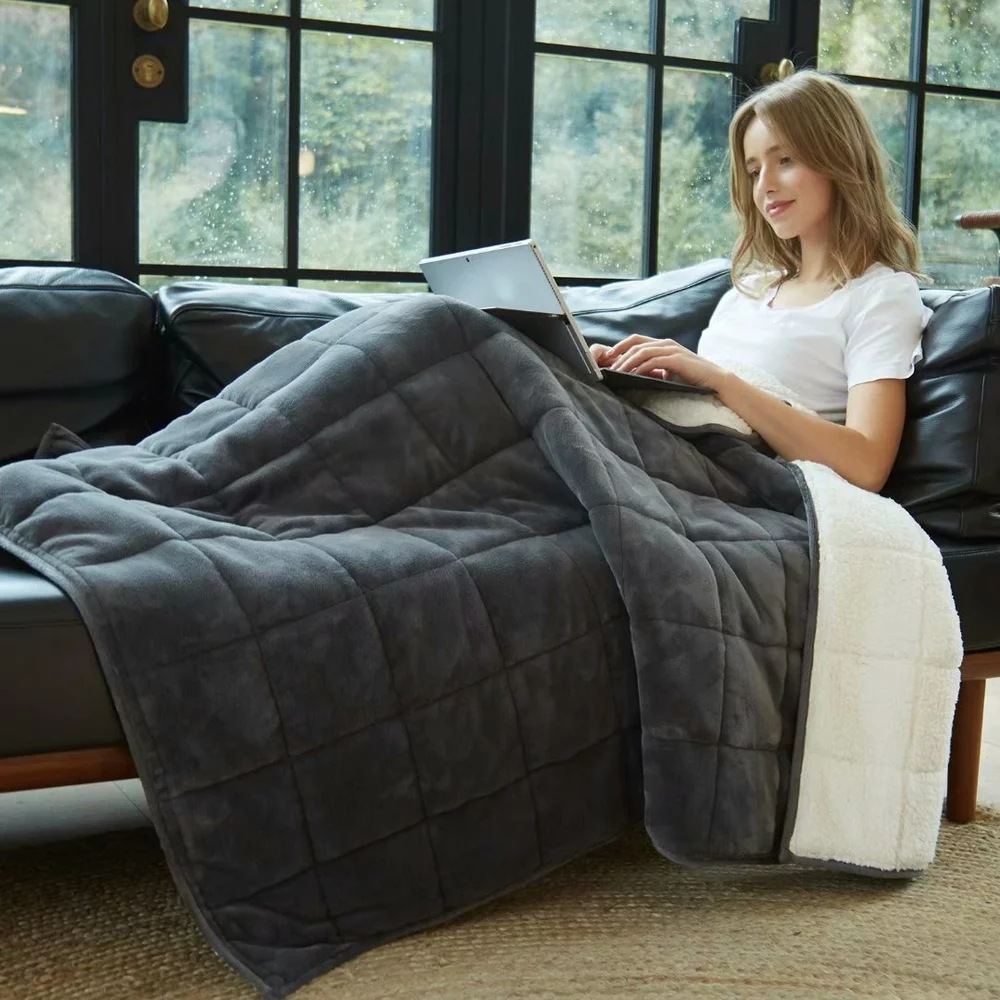
Weighted blankets are designed to provide gentle pressure and a sense of security, making them ideal for individuals seeking comfort and relaxation. They are filled with materials such as glass beads or plastic pellets to distribute weight evenly across the body, promoting a calming and soothing effect.
- Composition: Cotton, fleece, or Minky fabric filled with glass beads or plastic pellets
- Best For: Promoting relaxation and reducing anxiety or stress
Heated Blanket
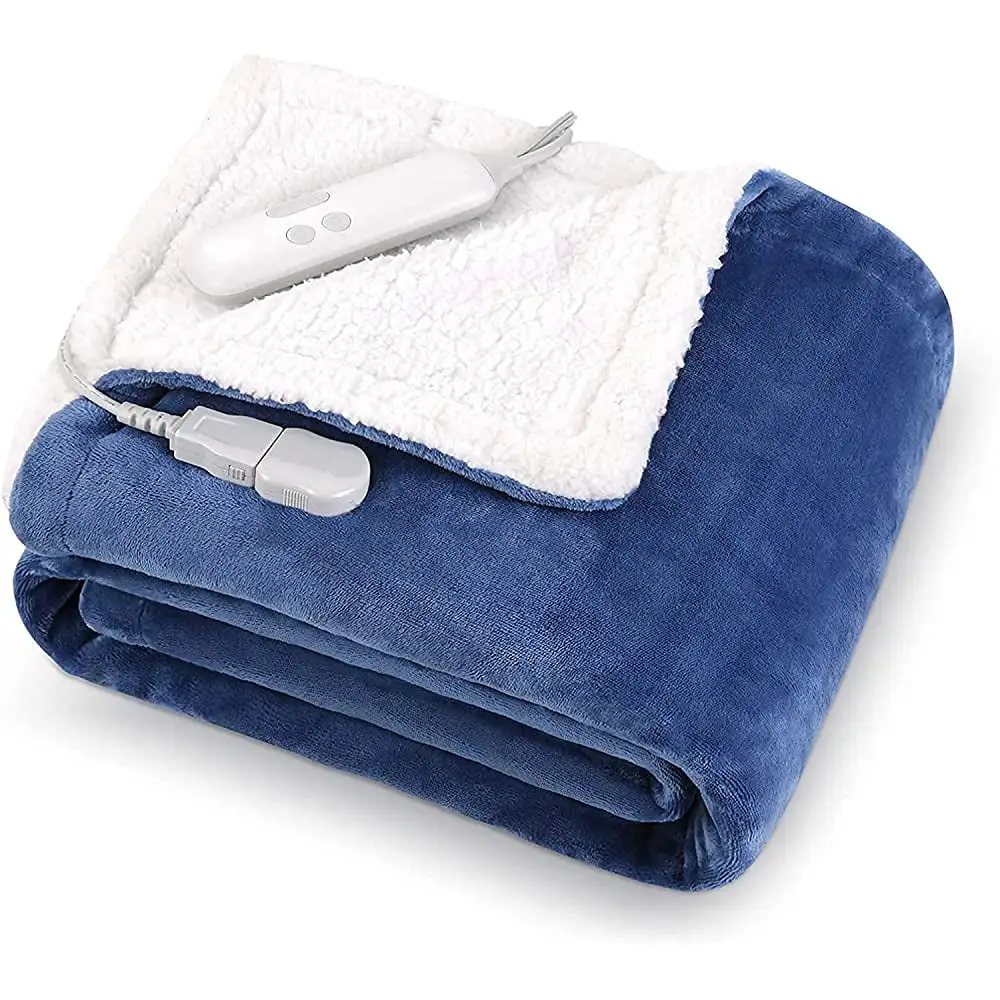
Heated blankets offer customizable warmth through integrated electrical heating elements. They are particularly beneficial for individuals seeking targeted warmth and comfort during cold weather, providing soothing heat to specific areas of the body.
- Composition: Soft polyester with integrated electrical heating elements
- Best For: Providing targeted warmth and comfort during cold weather
Blanket Materials
Understanding the different types and materials will help you choose the perfect blanket for your needs, ensuring comfort and coziness year-round.
Cotton
Cotton blankets are a popular choice for their breathability and easy maintenance. They are suitable for all seasons, keeping you cool in the summer and providing just enough warmth in the winter. These blankets are easy to clean and maintain, making them a practical choice for everyday use.
Wool
Wool blankets are known for their natural insulating properties and moisture-wicking abilities. These blankets are an excellent choice for cold climates, as they provide exceptional warmth and comfort. Wool blankets are also durable and can last for many years with proper care.
Down
Down blankets are lightweight and known for their excellent heat retention. They are filled with soft clusters of down feathers, making them incredibly warm and cozy. These blankets are best suited for individuals who tend to feel cold while sleeping, providing the right amount of warmth without feeling heavy.
Fleece
Fleece blankets are valued for their softness and lightweight feel. They are perfect for chilly evenings, providing warmth and comfort without being too heavy. Fleece blankets are also easy to maintain and quick to dry, making them a convenient option for everyday use.
Silk
Silk blankets are luxurious, soft, and naturally hypoallergenic. They are an ideal choice for individuals with sensitive skin, as silk is gentle and soothing. These blankets offer a luxurious feel and are excellent for adding a touch of elegance to the bedroom.
Microfiber
Microfiber blankets are crafted from fine synthetic fibers, giving them a soft and smooth texture. They are lightweight and breathable, making them suitable for year-round use. Microfiber blankets are also durable and easy to care for, making them a practical choice for daily use.
Cashmere
Cashmere blankets are known for their exceptional softness and warmth. Derived from the fine undercoat of cashmere goats, these blankets offer luxurious comfort and are highly prized for their quality. Cashmere blankets are an indulgent choice, providing unparalleled softness and insulation for a truly cozy experience.
Blanket Weaves and Construction
Blankets come in various weave types and are constructed using different techniques to achieve specific textures and properties.
Weave Types
- Plain Weave: The most basic and common type of weave, the plain weave is simple and tight, resulting in a durable and versatile blanket. It consists of a one-over, one-under pattern, creating a flat, smooth surface.
- Twill Weave: Twill weave blankets are characterized by diagonal lines or ridges on the fabric. This weave is achieved by passing the weft thread over one or more warp threads and then under two or more warp threads, creating a distinctive pattern. Twill weave blankets are known for their strength and drape.
- Waffle Weave: Waffle weave blankets feature a textured surface that resembles a waffle pattern. This weave creates a lightweight, breathable blanket with good absorbency, making it ideal for warm-weather use.
- Honeycomb Weave: The honeycomb weave creates a blanket with a hexagonal pattern, resembling the structure of a honeycomb. This weave provides excellent insulation and a unique visual texture, making it both functional and visually appealing.
Construction Techniques
- Filling: Blankets can be constructed using filling techniques, where additional materials such as down, polyester, or wool are inserted between the layers of fabric to add warmth and comfort. This technique is commonly used in comforters and duvets.
- Quilting: Quilting involves stitching together multiple layers of fabric with a layer of insulating batting in between. This construction technique creates a blanket with a distinctive stitched pattern while ensuring that the filling remains evenly distributed.
- Binding: Blankets can be finished with binding, where a separate strip of fabric is sewn along the edges to provide a clean and durable finish. Binding not only reinforces the edges of the blanket but also adds a decorative element to the design.
Choosing the Right Blanket for Your Needs
Determine Your Specific Needs
Before purchasing a blanket, it's important to determine your specific needs to ensure that the chosen blanket aligns with your requirements. Consider whether you need the blanket for warmth, comfort, or specific health-related reasons.
Consider Your Climate
- Seasonality: The climate of your location and the changing seasons should influence your choice of blanket. For colder climates, a heavier and warmer blanket might be necessary, while a lighter blanket may suffice in warmer climates.
- Temperature Preference: Your personal temperature preference also plays a significant role in selecting the right blanket. Some individuals may prefer a blanket that provides extra warmth, while others may prefer a lightweight option for a cooler feel.
Evaluate Material Options
- Natural Fibers: Blankets made from natural fibers such as cotton, wool, or silk offer breathability, softness, and natural temperature regulation. They are ideal for those who prioritize natural and sustainable materials.
- Synthetic Fibers: Blankets made from synthetic fibers like polyester or microfiber are often more affordable and can be suitable for individuals with specific allergies or those seeking easy maintenance.
Consider Blanket Weight
The weight of the blanket can have a significant impact on its comfort and functionality. Some individuals may prefer a heavier-weighted blanket for a cocooning effect, while others may opt for a lighter option for easy maneuverability.
Explore Size Options
- Bed Blankets: For bed blankets, it's essential to choose a size that adequately covers the bed while allowing for some overhang for tucking in.
- Throws: Throws are typically smaller and are designed for added warmth and decoration. They are perfect for draping over sofas or using as an additional layer on beds.
- Travel Blankets: When selecting a travel blanket, portability and compactness are key considerations. Look for blankets that can be easily folded or rolled up for travel convenience.
Test Texture and Feel
The texture and feel of a blanket are crucial for comfort. Before making a purchase, it's advisable to touch and feel the blanket to ensure that it's soft and pleasing to the skin, especially if it will be in direct contact with the body.
Special Considerations
- Allergies: If you have allergies, consider hypoallergenic options to minimize potential allergic reactions.
- Anxiety: For individuals with anxiety, weighted blankets can provide a comforting and calming effect, promoting relaxation and better sleep.
- Durability: Considering the durability of the blanket is important, especially if it will be frequently washed or used in high-traffic areas.
Set a Budget
Establishing a budget for your blanket purchase can help narrow down options and ensure that you find a blanket that meets your needs without overspending.
Read Reviews and Recommendations
Before making a final decision, take the time to read reviews and seek recommendations from others who have purchased the same or similar blankets. This can provide valuable insights into the quality, comfort, and longevity of the blankets under consideration.
Blanket Care Tips for Long-Lasting Comfort
1) Read the Care Instructions
Before anything else, always read and follow the care instructions provided by the manufacturer. This will give you specific guidance on how to best care for your blanket based on its materials and construction.
2) Wash Regularly
Regular washing helps to remove dirt, oils, and odors that can build up over time, keeping your blankets fresh and clean. However, be mindful of over-washing, as this can cause unnecessary wear and tear.
3) Use Cold Water
When washing your blankets, opt for cold water instead of hot. Hot water can cause shrinking and damage to certain fabrics, while cold water is gentler and helps preserve the integrity of the material.
4) Choose the Right Detergent
Select a mild detergent that is suitable for the type of blanket you have. Avoid using harsh chemicals or bleach, as these can degrade the fibers and affect the softness of the fabric.
5) Avoid Overloading the Washer
To ensure thorough cleaning and prevent damage to your blankets, avoid overloading the washer. This allows the blankets to move freely and ensures an even wash.
6) Air-dry Whenever Possible
Whenever possible, air-dry your blankets instead of using a dryer. Line drying or laying them flat can help maintain the fabric's integrity and prevent excessive wear from heat.
7) Brush Gently
For wool or fleece blankets, gently brush them with a soft-bristled brush to remove any pills or loose fibers. This helps to keep the material soft and smooth.
8) Fluff Up if Needed
After washing and drying, gently fluff your blankets to help restore their loft and softness. You can do this by hand or by using the dryer's low-heat setting.
9) Store Properly
When not in use, store your blankets in a cool, dry place away from direct sunlight and moisture. Proper storage helps prevent mold, mildew, and discoloration.
10) Rotate Use
To prevent excessive wear on specific areas of your blankets, consider rotating their use. This can help distribute any natural wear more evenly across the entire blanket, prolonging its lifespan.
FAQs
Which kind of blanket is the warmest?
For maximum warmth, consider a down or heated blanket. Down blankets are filled with the soft undercoat of geese or ducks, providing exceptional insulation and warmth.
What makes a throw different from a blanket?
Throws are typically smaller than blankets and are designed to be draped over furniture or used as a decorative accent. They are often made from lighter materials and serve more as a stylish accessory than a primary source of warmth.
What’s the Difference Between a Blanket, Comforter, and Duvet?
- Blanket: A general term for a large piece of fabric used for warmth.
- Comforter: Thicker than a blanket, filled with synthetic fibers, and used as a standalone bed covering.
- Duvet: Typically plain white and designed to be inserted into a duvet cover, it serves as the top layer of bedding.
Which kind of blanket is ideal for summertime?
A lightweight cotton blanket is ideal for summertime as it provides breathability and comfort without causing overheating.
Which kind of blanket has the most texture?
Knit blankets or those made from materials like chenille or faux fur often have the most texture, adding a cozy and tactile element to your bedding.
Is it possible to wash large blankets in a washing machine?
Yes, it's possible to wash large blankets in a washing machine, as long as the machine can accommodate the size of the blanket. It's important to check the care label for specific washing instructions and use a gentle cycle to avoid damaging the fabric.
Which blanket is ideal for every season?
A versatile option for every season is a wool blanket. Wool naturally regulates body temperature, keeping you warm in the winter and cool in the summer.
What blanket sizes are out there?
There are lots of blanket sizes for beds. These include standard sizes like a Queen or a King blanket, as well as special blanket sizes like a baby blanket or a throw blanket.
Which materials are used to make a blanket?
Lots of materials are used to make a soft blanket; you can find a fleece blanket, a fluffy blanket, a knit blanket, a sherpa blanket, a textured fabric, a plush blanket, a cotton-weighted blanket, or a faux fur blanket.
Does an oversized throw blanket keep you warm?
An oversized throw blanket can keep you warm if the temperature isn't too low and the weather is just chilly. If you want something for harsh winter nights, you can choose a wool blanket or a down blanket.
What are the best types of cuddle blankets?
Cuddle blankets for beds are comforters, consisting of two big textiles filled with warm materials that will keep you cozy and hugged, such as feathers, cotton, or polyester fill.
Conclusion
By understanding the different types and materials available, you can make choices that align with your needs and preferences, ensuring that your blankets not only serve their practical purpose but also enhance the aesthetic appeal of your living spaces.
Jessica H.
Jessica is a reviewer, writer, and sleep enthusiast at Sleepiverse. Jessica graduated with her master's degree in Nursing research and education. She is a registered nurse and currently works in the Intensive Care Unit. Since becoming a nurse, Jessica has worked the night shift, which means a disrupted sleep schedule. Knowing she needed to function at her best while caring for patients at night, she spent a lot of time researching how to sleep well with a difficult schedule.


